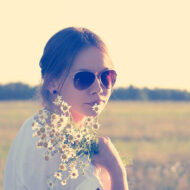Texture
It Makes Life Interesting
So, let’s briefly discuss our last basic art element, texture. In a nutshell, texture is the way things feel, or the way things look like they might feel if touched. Texture is all around us. The smooth polish of a granite countertop versus the smooth, soft surface of a leather saddle, the rough scratchy surface of an emery board or the gravelly feel of asphalt, the course fibers of low pile carpet or the soft fluff of a feather boa.
We identify texture both visually and tactilely. In two-dimensional art, the artist must rely solely on the visual aspect. He or she must accurately recreate the look of any number of textures in order to give their work visual appeal and interest. Being able to recreate the look of a variety of textures also makes each work more believable. The viewer will buy into each piece more readily because they know in their minds how that thing feels.
Recreating texture in drawings or paintings, as well as graphic design, requires a great attention to detail. It also requires patience, as often times it is the focus to minute detail that makes the difference between a good piece of work and one that boggles the mind with how great it is. Take the texture of human flesh. From a distance, it might look smooth, assuming the person’s complexion is clear. But in reality it is anything but smooth like glass. Even the most porcelain, flawless skin is marred with criss-crossing crevasses, pores, and tension lines.

Portrait by Dirk Dzimirsky. Notice the tension in her brow, the creasing in the lips, her hair, the soft peach fuzz under her nose and chin.
Take hyper-realist artist Dirk Dzimirsky’s incredible portraits as an example. With pen and pencil, he has accurately portrayed the texture of this girl’s skin.
Ghana artist, Jeffrey Appiatu, also specializes in hyper-realistic portraits. Not a single pore escapes his meticulous attention.
You can easily imagine how it would feel to run your hand through this cow’s hair in this painting by Teresa Elliott.
Take the time to notice the things around you. What kind of textures do they have? How does it look like it might feel? How might you approach drawing this particular texture? This one is another exercise one of my professors had us do. It was a fun one. Take a crack at it yourself.
Create a grid of nine two-inch squares. Use each square to draw a different texture. Try to draw it to the best of your ability. Here’s an example of what this exercise looks like. Have fun with it!







Recent Comments